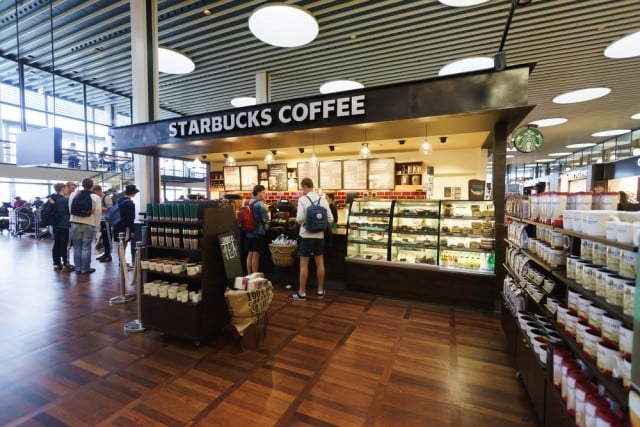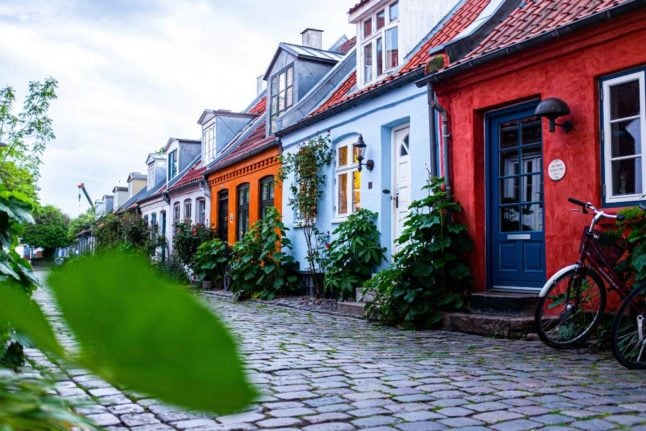In an ordinary Starbucks in Copenhagen, as I sip my latte, I cannot help but notice the everyday display of multiculturalism.
The perfectly adequate coffee is not the reason why people come here. The American franchise, born in Seattle, gives the people of Copenhagen the possibility of partaking in American popular culture. The coffee culture, and especially the kind where you fetch your much-needed coffee on the go, in a terribly stylish paper cup, is relatively new to Denmark, having emerged gradually in the late 1990s. Starbucks itself didn’t make it onto Danish soil until 2007.
But, people love it and whatever coffee shop you enter, the view that greets you is mostly the same: crowds of people taking in the special feeling one finds in a coffee shop.
It’s cosy there. The mellow jazz, the scent of freshly grounded coffee, the tempting odour of croissants, and the snug soft arm chair in the corner that only a few are lucky or quick enough to sit in make the coffee shop a favourite location of many a Copenhagener.
Mostly, I love the coffee shop for the diversity one finds there. To be sure, people come because of the brand, because it allows them to retain a certain hip image, but also because, perhaps to a greater extent than they are aware of, it transports them to a multicultural space.

Starbucks at Copenhagen Airport. Photo: teamtime/Depositphotos
The guests sip their French or Italian born coffee variations made from coffee beans harvested in South America or Africa. They listen to lulling jazz tunes. A waitress calls out an order in Spanish, perhaps for a tourist.
The women next to me speak Serbian, and two friends across me speak in Danish; one has the pale skin and blond hair of a Scandinavian native and the other has the olive skin and brown hair of someone from a warmer climate. In the queue, there’s an Arab couple talking about what they should entertain their children with during the winter break. I know because they are speaking in Danish.
READ ALSO: OPINION: My humbling journey into a surprising Scandinavian life
The girl behind the counter is transgender, only discernible by her completely flat chest. Outside, a black man is enjoying his coffee in solitude and watching people pass by. A couple of Asian youngsters defy all stereotypes and look like something from the 1970s British punk scene, the guy teaches the girl to say “straw” in Danish: “sugerør” which directly translates into “sucking pipe”. They laugh and leave.
I watch these people going about their ordinary lives, and I notice how no one notices the multicultural display. No one passes a second glance at anyone, except perhaps at the woman who stares at them, smiles and then frantically types on her smartphone. No one stops in marvel or bewilderment at the sight of the black man, the Asian youngsters or any of the other people because this is simply another day in their lives.
No one requests Danish grown coffee (mind you, there’s no such thing), no one minds the people around them or the Spanish speaking waitress. No one demands that the jazz is replaced with Carl Nielsen. They don’t because it’s perfectly ordinary to encounter these people and these things out and about.
READ ALSO: Queen Margrethe: Denmark 'not a multicultural country'
It’s the world right here in a Starbucks in Copenhagen. And when they leave they meet the same elements in the street, in the supermarket, at their jobs, at the bars and restaurants and in their homes on TV or on Spotify.
I then begin to picture the view from where I sit without this display of multiculturalism.
First of all, I’d be sitting in the street, because there’d be no Starbucks or alternative coffee shop. I would sit there alone with the pale blond girl. I’d have no coffee to sip. And when I left, I’d have a very limited selection of people, bars, groceries and music and TV to enjoy. There’d be no one to laugh at the obscurity of the word “sucking pipe”. I wouldn’t know about 1970s British punk, I wouldn’t ever have tasted a croissant or heard the mellow tunes of jazz.
I think of this and feel relief and gratitude. I’m grateful for the globalised world, and for the splendour of culture it has brought me. Denmark is a small country, but it could be frighteningly smaller. Luckily, it’s not.
 Laura Maria Kjær holds a Master’s degree in English literature from the University of Copenhagen, specialising in postcolonial fiction and multicultural literature. She has previously contributed to Kristeligt Dagblad and Bogligt.dk and can be contacted at [email protected].
Laura Maria Kjær holds a Master’s degree in English literature from the University of Copenhagen, specialising in postcolonial fiction and multicultural literature. She has previously contributed to Kristeligt Dagblad and Bogligt.dk and can be contacted at [email protected].



 Please whitelist us to continue reading.
Please whitelist us to continue reading.